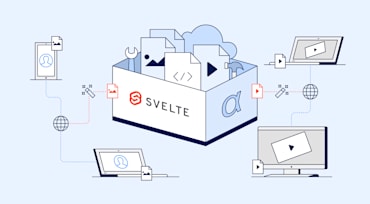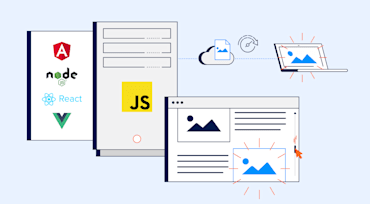Most might know Bloomsbury Publishing as the publisher of the Harry Potter series. What you might not know is that the publishing house also has a vibrant academic division that offers digital reproductions of encyclopedias, manuscripts and museum collections for use by university libraries and researchers. Seeking a way to manipulate and serve high-resolution images, combined with security that prevented anyone other than library patrons and paid users to access the content, Bloomsbury discovered Cloudinary’s digital asset management (DAM) solution.

As lightweight versions of native apps, progressive web apps (PWAs) offer a reliable, instantly installable version of traditional apps. This post explains the inner workings of PWAs, describes the best practices for developing PWAs, and clues you in to Cloudinary’s superior capabilities for optimizing rich media for faster load times as part of app content.

Back in April, Cloudinary made available on npm an alpha version of its components library for Svelte, a release that’s a wonderful addition to Cloudinary’s suite of client-side SDKs: React, Vue, and Angular. Those three front-end SDKs offer simple yet comprehensive optimization, transformation, and delivery capabilities for images and videos—features that you can tailor to automatically apply the best-fitting formats for all devices and browsers.

Since its founding in 2012, Cloudinary has released software development kits (SDKs) in over a dozen languages and frameworks, adding feature after feature for numerous technologies. So far, those releases have proceeded in an evolutionary manner. We’re now overhauling them to serve developers even better, starting with the JavaScript (JS) SDK. For details, see our recent post on Cloudinary’s next-generation developer SDKs.

For the past eight years, Cloudinary powered media experience for countless websites and systems worldwide by managing, delivering, and optimizing their media. That’s because Cloudinary’s technology gives you, as developers, capabilities for creating, manipulating, and transforming media on the fly with a self-evident API in the form of a URL.

JavaScript is a popular programming language, typically for building interactive web apps, thanks to its ease of use and ability to run in any browser with no "JavaScript turned off" setting. The language is easy to learn, accelerating app development. However, to avoid performance issues, be sure to optimize your JavaScript apps for media loading. You can do that by adopting techniques for optimizing website images, such as lazy loading.

Attracting visitors to engage with your product videos is an excellent way to boost clickthrough rates, and ultimately, sales. The question is, how do you generate that engagement? Playlists and clickable links come to mind, but generally they appear only after a video has finished playing. For a more captivating user experience, add relevant interactivity throughout the video.

Originally developed for Apple, HTTP Live Streaming (HLS) is a video-streaming protocol, supported by Android and other mobile platforms. HLS uses adaptive bitrate to adjust video quality to each viewer’s internet speed and device capabilities. Presently, HLS is mandatory for live streaming on certain mobile devices and most HTML5 video players.


A year ago, I talked about JPEG XL at ImageCon 2019. It’s time for an update.
JPEG XL is a next-generation image codec currently being standardized by the JPEG Committee. Based on Google’s PIK codec and Cloudinary’s Free Universal Image Format (FUIF) codec, JPEG XL has created a sum that’s greater than the parts by leveraging the best elements of Google PIK and FUIF:
